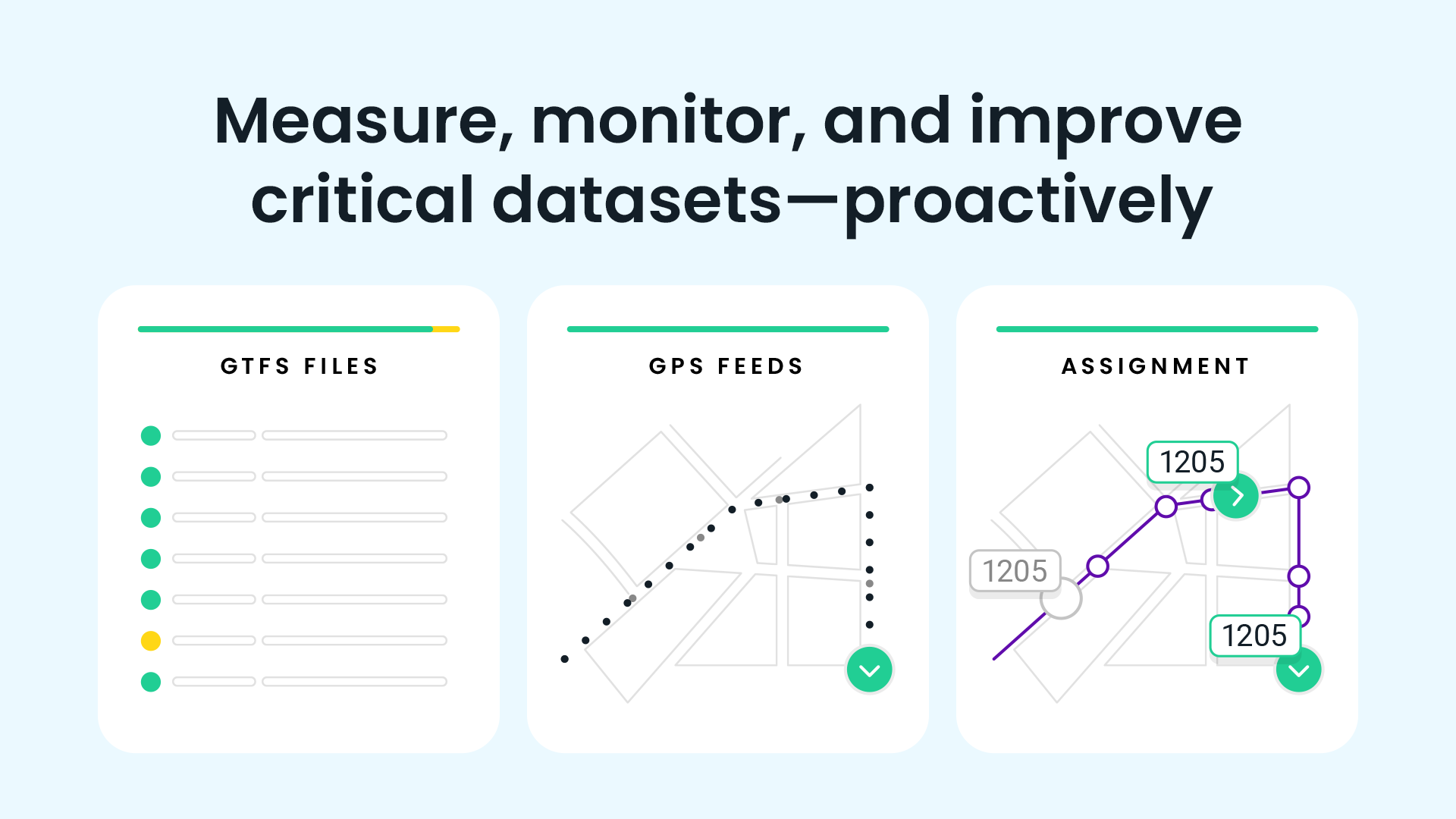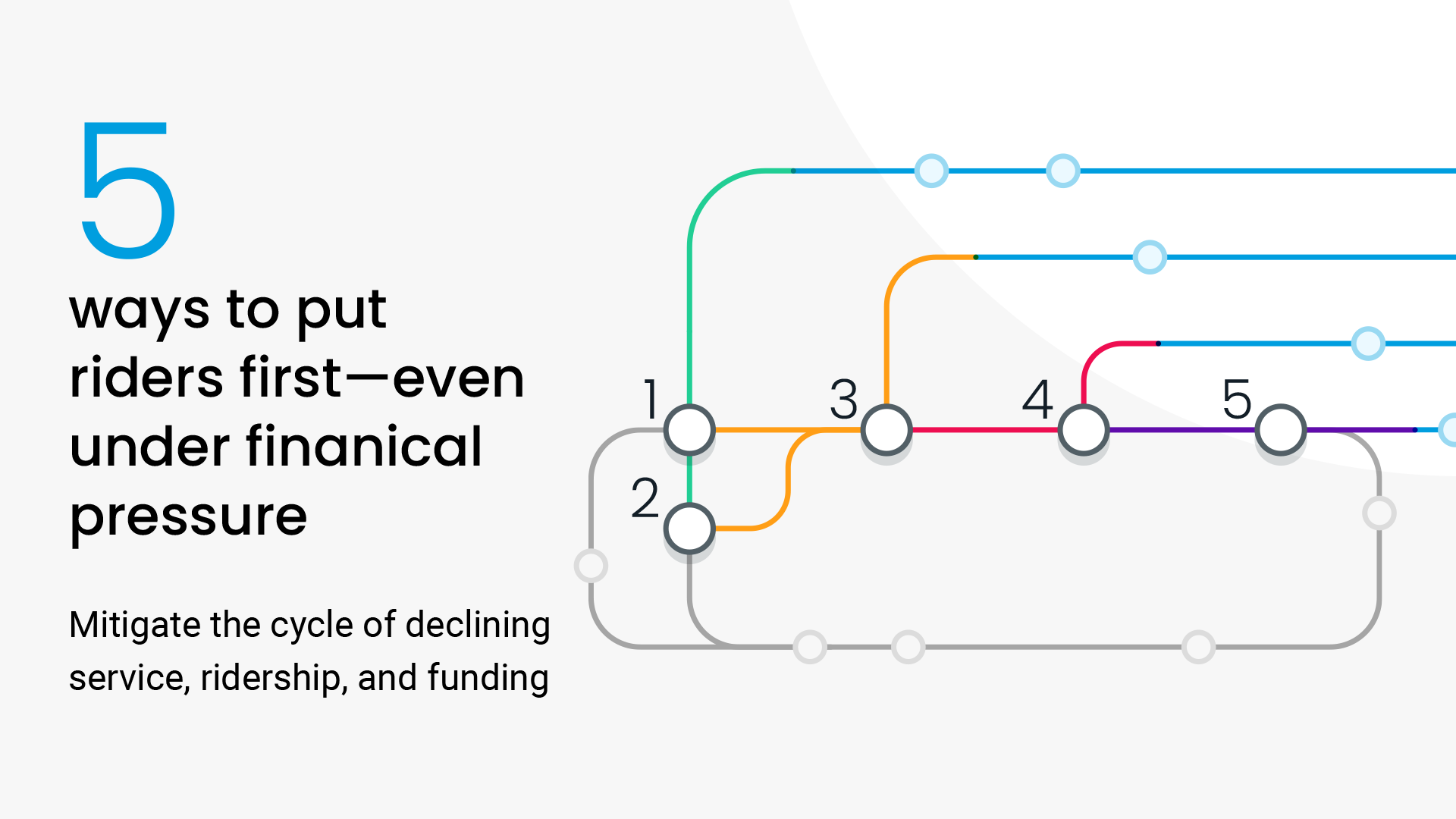
August 31, 2020
CDC Australia Uses Onboard App to Reduce Early Departure by 37%

August 31, 2020
CDC Australia Uses Onboard App to Reduce Early Departure by 37%
August 31, 2020
CDC Australia Uses Onboard App to Reduce Early Departure by 37%
Executive summary
The team at ComfortDelGro Australia (CDC) aims to increase bus ridership by making their service more reliable. But their operators didn’t have any easy way to understand how well they were adhering to the schedule or how close they were to other buses on the same route. It made it difficult to maintain headway and frustrated riders who were missing buses that had left early. With Swiftly Onboard App, operators get simple, immediate feedback, allowing them to correct deviations for schedule-based service, maintain vehicle spacing for headway-based service, and cut early departures for both. CDC has seen a demonstrable improvement in reliability and on-time performance since they started using Onboard App, giving riders more confidence in their bus transport.
By the numbers
- 37% reduction in early departures
- On-time performance increases 7.5% when operators are logged into Onboard App
- When vehicles using Onboard App are early, there is >6% reduction in the number of minutes early
- CDC uses Onboard App to avoid liquidated damages of up to $3 million per year
- CDC’s buses run at 96% reliability, with ridership increasing 7–9% per annum pre-pandemic
More control and management for operators
ComfortDelGro Australia (CDC) prides itself on maintaining a robust and reliable fleet of buses. The private bus operator provides top-notch public transport to New South Wales, helping 34 million passengers get where they need to go every year.
“We are on a journey to elevate the customer’s experience using public transport,” says Wayne Jeff, CEO at CDC Australia. “All of our futures are tied to making sustainable changes to the way we function as a community. We want to get people out of cars, and the way you do that is by providing a viable alternative.”
But there was a missing piece: CDC’s operators didn’t have a way to easily see how their trip was going, making it difficult to correct when they were early or getting too close to the buses ahead of them. Passengers couldn’t be sure that the bus would be there when they expected it.
“Bus operators are usually unsupervised, and we wanted to give them a sense of being connected,” says Jeff. “We wanted to be able to give them real-time feedback to help them do their jobs better.”
That’s become even more important as some of CDC’s routes have switched to headway-based service. “Headway is a new key performance indicator for New South Wales,” says Ben Gao, Data Development Manager at CDC. “We’re seeing the service from a customer perspective and looking at expected wait times between buses. And to make that work, the operator needs to observe the vehicles in front and behind to maintain a reasonable headway.”
To do that, bus operators needed a tool that would help them space buses and keep customer wait times low. “We wanted something that would let operators react when their fellow operators were running ahead or behind, or when traffic conditions changed. They needed more visibility and control,” says Gao. “What we needed was an onboard tool designed specifically for operators.”
Simple, immediate on-vehicle feedback
CDC installed Swiftly Onboard App on off-the-shelf Android tablets on each of their buses to give operators a simple, visual way to assess how they’re driving their route and make adjustments accordingly. “Swiftly Onboard App has helped operators visualize live status on the screen. It lets operators know: ‘Am I behind? How far am I behind others? Am I running early?’” says Gao. “The results have been very positive.”
“One of the things that’s good about Swiftly Onboard App is how immediate and simple the feedback is. We’re not trying to give operators too much data,” says Jeff. “It’s a clear, simple visual and I think that’s the key to the success here. Some of the other operator software we’ve seen is trying too hard to give too much data. Swiftly, on the other hand, looks so good and is so easy to use.”
“You don’t want to distract the operator too much while driving,” agrees Gao. “You don’t want to crowd the screen with too much information. Swiftly’s Onboard App, which you can put on any tablet you want, displays just the operator’s status compared to other operators. You don’t spend a lot of time looking at it. You can tell if you’re too fast or too slow based on the color of the circle on the app. It’s been much safer than a very small screen with too much information. It’s one of the advantages over other options, and it gives operators more than enough information to make decisions.”
Onboard App also makes operators more accountable, both to their schedules and to each other, and it’s been essential to improving reliability. “When the tablets are on board, operators know someone is actually looking at them, whether it’s the operator behind them or the CDC control room,” says Gao. “Operators deliver more steady, reliable service when they use Onboard App.”
A significant increase in reliability
Since CDC started using Onboard App, they’ve reduced early departures by 37% — a particularly important win during the pandemic. “A quarter of all of our complaints during COVID-19 has been that operators are leaving early. Leaving early is something we can’t abide,” says Jeff. “There’s less traffic and fewer passengers because of the pandemic. Operators had been racing to the end of the trip, but that’s been significantly reduced with Onboard App.”
That’s because Onboard App gives operators enough time to make corrections. “It underscores the importance of immediate feedback: You can correct one minute deviation pretty easily. But if it’s four minutes, five minutes, then there’s nothing you can do. You just have to run the service early.”
“They’ve never had simple, immediate feedback like that,” continues Jeff. “That’s the big one; they’ve never had that. They’ve just never, never had that.”
On-time performance has also increased by nearly 7.5% when vehicles are logged into the onboard app, as compared to when vehicles are logged out. “Not every operator would check their time sheet along the route to make sure they were adhering to the schedule. Some of them were only concerned with whether they were starting on time,” says Gao. “Onboard App keeps them on schedule the whole route.”
CDC has plans to test out additional Swiftly modules, like Service Adjustments, on their operator tablets which will let CDC manage scheduled service changes and unforeseen disruptions and give operators real-time navigational assistance, especially in the case of emergency bussing. “Swiftly is a great personal assistant for the operator. We would love to test out the navigational functions onto the tablets,” says Gao. “Swiftly has developed a whole set of beautiful new tools and we’re excited to test them out and introduce them to our entire fleet if Transport for New South Wales agrees.”
It’s all part of a plan to make transit more reliable in New South Wales in order to increase ridership. “We’re running a program where we tell the public that the bus is running at 96% reliability. We’re bringing people around to the idea that bus transport is reliable,” says Jeff.
There’s a financial incentive for CDC to remain reliable as well. The public transport operator endures penalties when their service doesn’t meet the specifications of their contract. Onboard App could help CDC avoid up to $3 million in liquidated damages a year.
Making reliability their number one focus is working well for CDC. “Our ridership was going up in Sydney pre-COVID-19, 7–9% per annum. Satisfaction scores are at around 95%. People have more confidence in their public bus transport,” says Jeff. “And when we can put an app into a bus that can stop an operator from running early, that makes a fundamental difference in the confidence people have in their journey.”
Want to learn more? Read more about Onboard App today.
Request a demo
The rich text element allows you to create and format headings, paragraphs, blockquotes, images, and video all in one place instead of having to add and format them individually. Just double-click and easily create content.
Last Name, Agency

What’s a Rich Text element?
What’s a Rich Text element?
What’s a Rich Text element?
What’s a Rich Text element?
What’s a Rich Text element?
The rich text element allows you to create and format headings, paragraphs, blockquotes, images, and video all in one place instead of having to add and format them individually. Just double-click and easily create content.
Last Name, Agency
Static and dynamic content editing
A rich text element can be used with static or dynamic content. For static content, just drop it into any page and begin editing. For dynamic content, add a rich text field to any collection and then connect a rich text element to that field in the settings panel. Voila!
How to customize formatting for each rich text
Headings, paragraphs, blockquotes, figures, images, and figure captions can all be styled after a class is added to the rich text element using the "When inside of" nested selector system.
- text goes here
- text goes here
- text goes here
- text goes here
- text goes here
- text goes here









